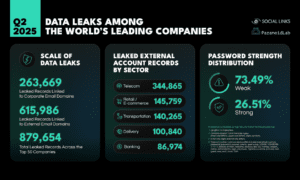In today’s rapidly evolving digital landscape, the need for efficient, accurate, and secure data collection methods has become paramount for businesses, institutions, and individuals alike. Gone are the days when organizations relied heavily on paper forms, clipboards, and manual data entry. As technology continues to advance, digital form software has emerged as one of the most transformative solutions in modern business operations.
From streamlining workflows and enhancing productivity to ensuring real-time access to critical data, digital form solutions are changing the way organizations operate. This article dives deep into what digital form software is, its key benefits, core features, real-world applications, and how it can revolutionize your business processes.
What is Digital Form Software?
Digital form software is a technology-driven tool that allows users to create, distribute, and manage forms electronically. Instead of relying on traditional paper-based systems, these platforms enable businesses to gather information digitally through mobile devices, tablets, or computers.
Users can fill out forms online, offline, or via mobile apps, and all the collected data is automatically stored and organized in a centralized database. This automation eliminates manual data entry errors, reduces administrative workload, and ensures faster access to accurate information.
At its core, digital form software helps organizations digitize and streamline their form-related processes—whether it’s surveys, inspection checklists, feedback forms, onboarding documents, or audit reports.
Why Digital Form Software is Gaining Popularity
The growing adoption of digital transformation across industries has accelerated the shift toward paperless workflows. Organizations now understand that data accuracy, accessibility, and speed are crucial for staying competitive.
Here are some of the key reasons why digital form software is gaining traction:
1. Paperless Efficiency
Paper-based forms often involve printing costs, manual distribution, and time-consuming data entry. Digital forms, on the other hand, can be instantly created, shared, and submitted electronically, minimizing waste and maximizing efficiency.
2. Real-Time Data Collection
One of the most significant advantages of digital form software is real-time access to information. As soon as a user submits a form, data becomes available instantly to authorized personnel, enabling quick decision-making.
3. Enhanced Accuracy and Compliance
Automated form validation and error-checking features ensure that users fill out all required fields correctly. This prevents missing or incorrect data and supports compliance with organizational and regulatory standards.
4. Customization and Flexibility
Modern digital form platforms allow businesses to design custom forms tailored to their needs. From adding brand elements to incorporating specific logic rules, the flexibility of these tools ensures that the forms align perfectly with organizational processes.
5. Remote and Mobile Accessibility
With remote work becoming the new normal, teams need tools that support collaboration and data collection from anywhere. Digital form software enables mobile-friendly and offline submissions, ensuring smooth workflows even without an internet connection.
Key Features of Digital Form Software
To fully understand the potential of this technology, let’s explore some of the most impactful features that define robust digital form platforms.
1. Drag-and-Drop Form Builder
A user-friendly interface allows teams to build professional forms without any coding knowledge. Users can simply drag and drop fields, text boxes, checklists, dropdown menus, and more to design the perfect form.
2. Conditional Logic
Conditional logic enables dynamic forms that adapt based on user responses. For example, if a respondent selects “Yes” to a specific question, new fields or options can appear automatically.
3. Offline Functionality
Field workers or remote teams can fill out and submit forms even without an internet connection. Once the connection is restored, the data automatically syncs to the central database.
4. Data Security and Encryption
Leading digital form platforms ensure that sensitive information is protected through encryption, access controls, and secure data storage. This is especially critical for industries like healthcare, finance, and government.
5. Integration with Other Tools
Digital forms can integrate seamlessly with third-party systems such as CRMs, ERPs, and cloud storage platforms like Google Drive or Dropbox. This automation reduces manual data handling and ensures information consistency across systems.
6. Analytics and Reporting
Comprehensive dashboards allow managers to visualize data trends, measure performance, and generate insightful reports with just a few clicks.
How Digital Form Software Transforms Business Operations
The impact of digital form solutions extends far beyond simple data collection. When implemented correctly, they serve as powerful tools for operational improvement and business intelligence.
1. Streamlining Workflows
Automated workflows ensure that data moves seamlessly between departments. For instance, when a form is submitted, it can automatically trigger notifications or approvals in the relevant department.
2. Reducing Costs and Manual Labor
By going paperless, organizations can cut down on printing, storage, and administrative costs. Additionally, automation reduces the manpower required for repetitive tasks such as data entry or record maintenance.
3. Improving Customer Experience
Customers appreciate fast, digital-first experiences. Online application forms, surveys, and feedback tools offer convenience, speed, and accuracy—enhancing overall satisfaction.
4. Ensuring Regulatory Compliance
Industries such as healthcare, finance, and logistics have strict documentation requirements. Digital forms can be configured to follow compliance standards automatically, ensuring accurate audit trails and accountability.
5. Enabling Data-Driven Decision Making
When all your form data is centralized and accessible in real time, it becomes easier to analyze trends and make informed business decisions.
Real-World Use Cases of Digital Form Software
Digital form tools are versatile and adaptable across industries. Here are some practical examples of how various sectors benefit from them:
1. Field Services and Maintenance
Technicians can complete inspection, installation, and maintenance reports directly on-site using mobile devices. This ensures faster service completion and instant data updates.
2. Healthcare and Clinics
Hospitals use digital patient intake forms to reduce waiting times, minimize paperwork, and ensure accurate patient information collection.
3. Logistics and Transportation
Drivers and logistics teams can use digital delivery confirmation forms, reducing paperwork and improving route tracking efficiency.
4. Human Resources
From onboarding documents to employee feedback forms, HR departments rely on digital forms to automate administrative processes and store records securely.
5. Education and Training
Schools, universities, and training centers use online registration and assessment forms to simplify enrollment and evaluation processes.
Choosing the Right Digital Form Software
When selecting a digital form solution for your organization, consider the following factors to ensure long-term success:
1. Ease of Use
Opt for a platform with an intuitive user interface and a drag-and-drop builder that your team can use without extensive training.
2. Scalability
As your business grows, your software should be able to handle increasing data volumes and users without performance issues.
3. Integration Capabilities
Check if the software integrates with your existing tools such as CRM, email platforms, or project management systems.
4. Security Compliance
Ensure the platform adheres to global security standards such as GDPR or HIPAA, especially if handling sensitive data.
5. Customer Support
Reliable technical support is essential for resolving any issues quickly and minimizing downtime.
The Role of Automation in Digital Forms
Automation is the backbone of digital form efficiency. From auto-populating fields to sending real-time alerts when a form is submitted, automation reduces manual effort and speeds up operations. For example, a field inspection report can automatically trigger a maintenance request when certain conditions are met.
Additionally, automated analytics can identify bottlenecks or repetitive issues, allowing managers to take proactive measures.
Why Businesses Should Invest in Digital Form Software
The world is moving toward complete digitization, and businesses that fail to adapt risk falling behind. Implementing digital form software is not merely about convenience—it’s about future-proofing operations.
This technology empowers organizations to:
- Reduce operational costs
- Improve compliance
- Enhance employee productivity
- Strengthen customer relationships
- Gain actionable insights from data
Investing in a digital form solution ensures that your business remains agile, efficient, and ready to meet modern challenges.
Conclusion: Empowering the Future of Work
Digital transformation is no longer optional—it’s a necessity. With the adoption of digital form software, businesses can eliminate inefficiencies, reduce paperwork, and unlock new levels of productivity.
From small startups to large enterprises, this technology bridges the gap between manual processes and intelligent automation, ensuring smoother workflows and smarter decision-making. As industries continue to evolve, those who embrace digital form solutions today will stand at the forefront of tomorrow’s innovation.



































